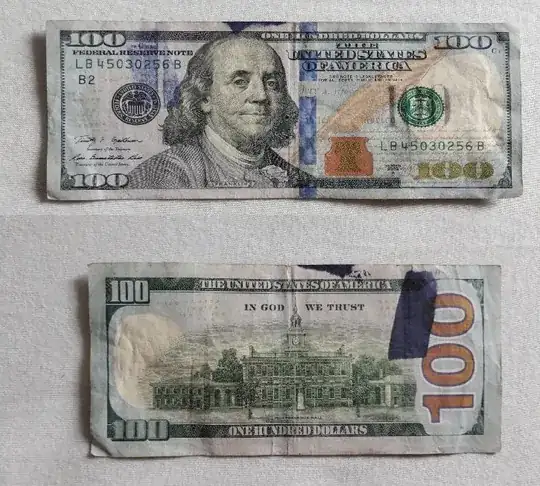One thing that makes me concerned: One of the tests for whether a bill is counterfeit used to be a marker which didn't react with real US currency but became visible when applied to other printed products. So you just might have been stuck with a counterfeit.
But there are a fair number of ways to check if a US bill is counterfeit, and since that's using the newer design it should have most or all of them: embedded "thread", a small area of ink that changes color depending on the angle you look at it from, microprinting. A websearch should find a page which shows you where to look for these, and if you bill has them then the mark is probably not reason to worry. If it doesn't, you have an expensive but illegal souvenir.
If it is counterfeit and you try to use or exchange it, you could be in for some very uncomfortable conversations with police until they were sure you weren't trying to pass it deliberately, and it would be taken from you. And no, you wouldn't get anything to replace it. So take the time to check. And knowing what to look for will help you protect yourself from the risk of USD counterfeits.
So one suggestion is to ask a bank if the bill is legit and, if so, exchange it there. Taking damaged bills out of circulation (along with releasing new bills into circulation) is one of the services banks provide, so it's not an unreasonable request.
